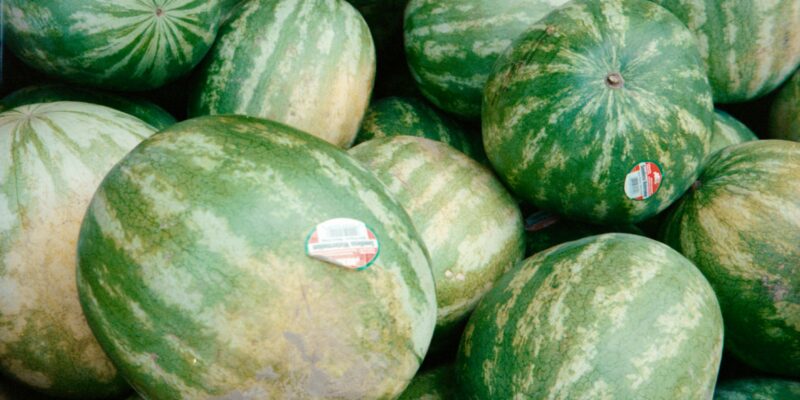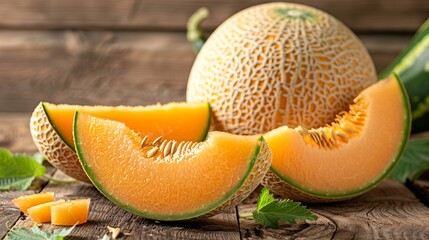
Watermelons are the perfect summertime treat, and growing them in your backyard can be a fun and rewarding experience. With their refreshing sweetness and hydrating benefits, watermelons are a favorite crop for many home gardeners. However, growing watermelons from seed requires careful planning and the proper techniques to ensure a successful harvest. Whether seasoned or a beginner, this guide provides everything you need to know to grow watermelons from seed in your backyard garden.
Why Grow Watermelons from Seed?
Growing watermelons from seed offers numerous benefits compared to buying young plants from a nursery. Starting from seed allows you to choose from various watermelon types, including heirloom, organic, and hybrid varieties. Additionally, seeds are often more cost-effective, and the satisfaction of watching your plants grow from tiny seeds into large, juicy fruits is unmatched.
Advantages of Growing Watermelons from Seed
- Variety Selection: Starting from seed allows you to select specific varieties best suited for your climate and personal preferences, such as seedless, heirloom, or compact “mini” watermelons.
- Cost Savings: Seeds are generally more affordable than seedlings, and with proper storage, unused seeds can be saved for future planting seasons.
- Control Over Growing Conditions: Growing from seed gives you complete control over the planting and growing process, ensuring a chemical-free and organic approach from start to finish.
If you’re ready to embark on this gardening journey, Buy watermelon seeds that match your local climate and backyard conditions. Choosing high-quality seeds is the first step in ensuring a fruitful and delicious harvest.
Preparing Your Backyard Garden for Watermelons
Watermelons are warm-season crops that thrive in full sun and well-drained soil. To grow them successfully, you’ll need to prepare your garden space carefully, ensuring that it meets the plant’s specific requirements.
Soil Preparation
Watermelons grow best in loose, sandy loam soil with a pH level between 6.0 and 6.8. This soil type allows for good drainage while retaining the moisture needed for the plants to thrive. Before planting, amend your soil with organic compost or well-rotted manure to enrich it with nutrients and improve its structure.
- Test the Soil: Conduct a soil test to check the pH level and nutrient content. If the soil is too acidic, add lime to increase the pH; if it’s too alkaline, sulfur can help lower it.
- Add Organic Matter: Incorporate organic compost to enhance the soil’s fertility and improve water retention. This supports healthy growth and helps establish a nutrient-rich environment for your watermelons.
Choosing the Right Location
Watermelons require full sun to thrive, so select a spot in your garden that receives at least 8 hours of direct sunlight daily. Ensure the area has good air circulation to minimize humidity and reduce the risk of fungal diseases.
- Space Requirements: Watermelon vines spread extensively, so allocate ample space for each plant. Ideally, each plant should have at least 3-4 feet of space around it to allow the vines to grow without restriction.
Planting Watermelon Seeds
Planting watermelon seeds at the right time and using the proper techniques are crucial for success. Watermelons are sensitive to cold temperatures, so they should be planted once all danger of frost has passed and the soil temperature reaches at least 70°F (21°C).
Steps for Planting
- Form Mounds or Hills: Create small or raised beds in your garden. Mounds help improve drainage and keep the soil warmer, aiding seed germination.
- Sow the Seeds: Place 3-4 seeds per mound, planting them about 1 inch deep into the soil. Space the mounds 4-6 feet apart to allow the vines to spread.
- Water Gently: After planting, water the seeds gently to settle the soil. Keep the soil moist but only waterlogged once the seeds germinate, which typically takes 5-10 days.
Thinning and Transplanting
Once the seedlings have emerged and reach a height of 3 inches, thin them out, leaving the healthiest two per mound. This ensures the remaining plants have enough space and resources to grow robustly.
Caring for Watermelon Plants
Watermelon plants need consistent care, especially during the early growth stages. Proper watering, fertilizing, and pest management are essential to ensure the plants develop healthily and produce quality fruits.
Watering Techniques
Watermelons comprise approximately 90% water, so consistent moisture is crucial. However, overwatering can lead to root diseases and negatively affect fruit development.
- Deep Watering: Water deeply once or twice weekly, ensuring moisture reaches the root zone. This helps establish strong roots and supports the plant during hot weather.
- Avoid Overhead Watering: Water the base of the plants with a soaker hose or drip irrigation system. This minimizes the risk of fungal diseases by keeping the foliage dry.
- Adjust Watering During Fruit Development: To enhance the fruits’ sweetness, increase watering when they begin to develop, but reduce it as they approach maturity.
Fertilizing Organically
For organic watermelon farming, avoid synthetic fertilizers and opt for natural alternatives like compost, bone meal, or fish emulsion.
- Early Growth Stage: Apply nitrogen-rich compost or organic fertilizer to encourage vine growth during the early stages.
- Flowering and Fruiting Stage: Switch to a fertilizer high in phosphorus and potassium to support fruit development and improve quality.
“Watermelons are not just fruits; they are nature’s way of giving you a sweet reward for your patience and care.”
Managing Pests and Diseases
Growing watermelons in a backyard garden requires vigilantness against common pests and diseases. Organic methods can protect your plants while maintaining a chemical-free environment.
Organic Pest Control
- Use Companion Plants: Marinating marigolds or nasturtiums near watermelons can naturally repel pests like aphids and beetles.
- Neem Oil: Apply neem oil to the plants as a preventive measure against insects like aphids and mites. It’s a safe and effective organic solution for managing pests.
- Row Covers: Use row covers to protect young plants from pests. Once the flowers bloom, the covers can be removed to allow for pollination.
Preventing Diseases
- Crop Rotation: Rotate your watermelon crops yearly to reduce the risk of soil-borne diseases like fusarium wilt.
- Maintain Air Circulation: Proper spacing and pruning ensure adequate airflow, reducing the likelihood of fungal diseases such as powdery mildew.
Integrating these organic methods allows you to maintain a healthy garden while minimizing the need for synthetic pesticides or fungicides.
Harvesting Watermelons
Knowing when and how to harvest watermelons is key to enjoying their sweetness and flavor. Watermelon varieties typically mature between 70 and 90 days, but the exact timing will depend on the variety and growing conditions.
Signs of Ripeness
- Tendrils: Check the tendril closest to the fruit. When it turns brown and dries up, it indicates the fruit is ripe.
- Sound Test: Tap the watermelon; a deep, hollow sound suggests it’s ready for harvest.
- Color: Look for a creamy yellow spot on the underside of the watermelon where it has been resting on the ground. This color change is a reliable sign of ripeness.
Harvesting Tips
Use a sharp knife to cut the fruit off the vine, leaving a small section of the stem attached to reduce the risk of rot. Avoid pulling the fruit as this can damage the vine or other watermelons nearby.
Enjoying the Fruits of Your Labor
Growing watermelons from seed in your backyard garden is a rewarding process that brings the joy of fresh, homegrown fruit to your table. By following these steps, from preparing the soil to harvesting, you can cultivate watermelons that are delicious and grown sustainably and organically.
Instead of seeing watermelon gardening as just another task, view it as an opportunity to connect with nature, experiment with different varieties, and create a bountiful harvest that your friends and family can enjoy. With patience, care, and the right seeds, your backyard can become a productive oasis that yields more than just fruit—it offers the satisfaction of growing and nurturing something from the ground up.
checkout other blog : Relieve Erectile Dysfunction Naturally Fruits











